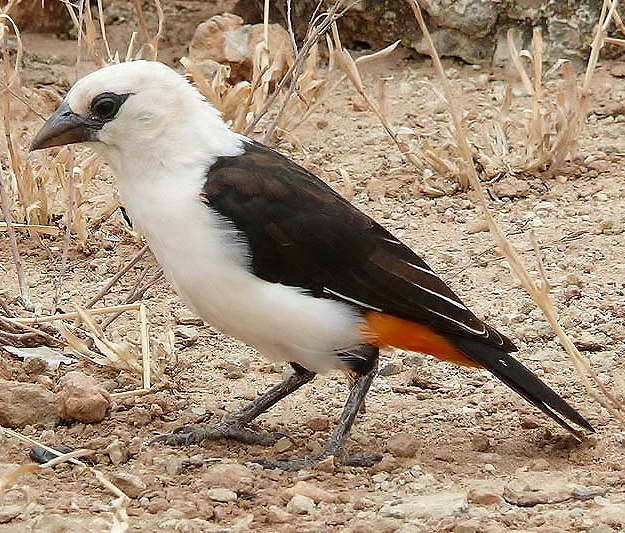 |
| (Photo from Scientific Library) |
Common name:
white-headed buffalo-weaver (en); tecelão-de-cabeça-branca (pt); alecto à tête blanche (fr); bufalero cabeciblanco (es); starweber (de)
Taxonomy:
Order Passeriformes
Family Ploceidae
Range:
This species is found in East Africa, from South Sudan and Ethiopia, through Kenya and Somalia and down to central Tanzania.
Size:
These birds are 17-19 cm long and weigh 57-85 g.
Habitat:
The white-headed buffalo-weaver is mostly found in semi-arid habitats, namely dry scrublands and thorny savannas, but sometimes also in dry tropical forests and along rivers and creeks. They are typically found from sea level up to an altitude of 1.400 m.
Diet:
They forage on the ground or in thorny scrubs. They eat insects, mostly beetles and caterpillars, but also take various fruits and seeds.
Breeding:
The breeding season of the white-headed buffalo-weaver depends on rainfall and varies between different parts of their range. The nest is an oval structure made of dry grass stems and lined with softer materials such as grass, leaves and feathers. The outside is covered with thorny sticks and twigs, for protection against predators, and there is a short entrance tube that opens downwards. The nest is suspended from a branch in a tree, 2-4 m above the ground. The female lays 3-5 greyish to pale blue eggs with brown and olive markings, which she incubates alone for 11-14 days. The chicks are fed by both parents and fledge about 3 weeks after hatching.
Conservation:
IUCN status – LC (Least Concern)
This species has a very large breeding range and is described as common. The population is suspected to be stable in the absence of evidence for any declines or substantial threats.







